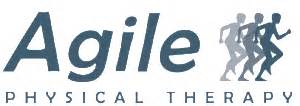Hip Strength and Knock-Knees
Posted by Rich Souza PT, PhD on September 17, 2012

The Starting Line:
Does hip muscle strengthening alone improve knee alignment during running?
Abnormal knee alignment during running has been clearly linked to pain and injuries in athletes, including patellofemoral (kneecap) and iliotibial band problems. Drs Willy and Davis, leaders in the field of running biomechanics, set out to investigate if hip strengthening exercises could lead to improved running knee alignment.
Willy and Davis studied twenty female runners with medial knee collapse during running (excessive hip adduction, creating a knock kneed effect), as determined through an initial screening process. Ten of the runners were randomized to a training group, while the remaining ten served as the control group. The training group conducted hip muscle strengthening, focusing on abductors and external rotators, and a movement education protocol (emphasis on proper knee alignment during squats), three times a week over a six week training period. Among others, the exercises of the training group included: side-lying abduction, sidestepping with a resistance band, and single leg squat with a resistance band targeting hip abductors. The control group received no strengthening exercises or movement education.
As expected, the training group showed significant increases in hip abductor and external rotator strength, as assessed by a hand-held dynamometer. Assessment of movement patterns revealed that the training group showed marked improvements in their alignment during single leg squats, but no differences in their movement patterns during running. This suggests that exercises performed help specifically for that motion, but will not always translate to a change in running. There should be benefits overall with improved strength, but working on activating the same muscles while running may be necessary to change running biomechanics.
The Finish Line:
Leg strengthening alone does not necessarily change running patterns, since movement re-training appears to be task-specific. Improving running alignment requires muscle activation and training during running.
References:
1. Dierks TA, Manal KT, Hamill J, Davis IS. Proximal and distal influences on hip and knee kinematics in runners with patellofemoral pain during a prolonged run. J Orthop Sports Phys Ther. 2008 Aug;38(8):448-56. http://www.ncbi.nlm.nih.gov/pubmed/18678957
2. Willy RW, Davis IS. The effect of a hip-strengthening program on mechanics during running and during a single-leg squat. J Orthop Sports Phys Ther. 2011 Sep;41(9):625-32. http://www.ncbi.nlm.nih.gov/pubmed/21765220
Photo credit: sergis blog via photopin cc
*Note: This general information is not intended to be a substitute for medical treatment or advice. Always consult a professional before making changes to your health and wellness practices.
Feedback or suggestions for future topics? Let us know!

